Rose Daily has led local sustainability projects from the Keweenaw Peninsula to Costa Rica. In this guest blog, the environmental engineering grad and current Ph.D. student shares what led her to the United Nations climate change summit as a member of Michigan Tech’s delegation.
Daily ’18 ’22 is one of 11 Huskies chosen to attend as Blue Zone observers at what is formally known as the 27th Conference of the Parties United Nations Framework Convention on Climate Change (UNFCC COP27), taking place Nov. 6-18 in Sharm el-Sheikh, Egypt. She will also present at events held in conjunction with the summit.

Sustainability is such a vital, important part of my life — it’s difficult to think back to a time when it wasn’t. My interest in sustainability sparked in 2016 when I was an undergraduate at MTU studying environmental engineering. I’d just joined the Alternative Energy Enterprise and had to choose a project topic to work with during my last two years of my undergraduate.
While I was torn between many interesting and intriguing projects, I decided to join a team of students working to establish a Sustainability Demonstration House (SDH) on MTU’s campus. Our goal was to retrofit an existing 5,000-square-foot home into a net-zero-energy, zero-waste, fully sustainable residence that we could use as a tool to educate the Keweenaw community on sustainable living and green housing design.
Through the five years I led this project, I developed a strong passion for sharing sustainability with my campus and community, and my own personal desire to reduce my impact on the earth.
When I graduated, I started working full-time as an engineer for Westwood Professional Services, where I designed multi-megawatt solar and wind farms across the United States. In the fall of 2019, I returned to MTU to pursue a master’s and Ph.D. in environmental engineering, degrees funded by the National Science Foundation Graduate Research Fellowship Program (NSF GRFP). I continued working on the SDH project as a graduate student and dived deeper into my research on destruction methods for aqueous per- and polyfluoroalkyl substances (PFAS).
In 2021, I followed my desire to learn about sustainability in developing countries, venturing to Costa Rica to work as a research affiliate for Instituto Monteverde. I was blessed with the opportunity to live in Monteverde’s beautiful cloud forest and build a gray-water treatment system for a local K-12 school.
My experiences in sustainability and climate change thus far have been from a local perspective. In both the Keweenaw and Monteverde, I worked closely with the community toward the common goal of protecting our environment.
While I love every aspect of sustainability-focused community engagement, I’m now following a new desire to broaden my climate change view from local to global.
Some questions I ask myself: How can my community’s actions inspire communities around the world? What role do our local actions play in the bigger picture? How can our communities, states and nations work together to collectively fight climate change?
UN Climate Change Summit Offers Big Picture View
The COP27 global climate change conference is the perfect opportunity for me and my peers to gain this global perspective.
Sarah Green, a principal investigator of the Youth Environmental Alliance in Higher Education (YEAH), invited me to speak on the U.S. Center Panel at COP27 on the topic of climate change education in the United States, along with six other distinguished individuals. YEAH was looking for strong student voices to bring a campus- and classroom-focused perspective to the panel. I consider myself only one of many student leaders on MTU’s campus advocating for our Earth, so I was absolutely honored to be selected. I’m excited to be speaking alongside Daniel Dominguez and Daniel Briggs, Colorado State University graduate students; Brandon Jones, a National Science Foundation program director; Ellen Stofan, the Smithsonian undersecretary for science and research; and Leah Dundon, a research assistant professor at Vanderbilt University. With our panel topic being so broad, we plan to cover various aspects of climate change education in the U.S., including how to broaden student and faculty participation and how we see the future of climate education evolving over the next decade.
I plan to discuss the role climate change currently plays in the Michigan Tech classroom and the actions students have taken outside of the classroom to promote sustainability in the Keweenaw community.
I hold the topic of climate education close to my heart. I wouldn’t be a community sustainability leader today if it weren’t for the knowledge I gained and experiences I had during my undergraduate and graduate years, which truly opened my eyes to the issue of climate change. With a larger focus on climate education, we can inspire and empower more youth to get involved in fighting climate change.
“Through education, we gain knowledge, and with knowledge we gain the power to take action.”

What I’ve observed during my time at MTU is that students don’t need infrastructure in place in order to take climate action. Students who are passionate about our environment will build their own foundation and their own platform to advocate for our Earth. Before Michigan Tech Sustainability efforts amped up in 2018 and Sustainability Director Alan Turnquist was hired in 2021, there was no mechanism in MTU’s administration that could function as a voice for students or provide a coordinated framework for student action. However, lack of higher-up resources didn’t stop students from forming their own climate-focused grassroots organizations. Keweenaw Youth for Climate Action (KYCA) has been relentlessly asking Michigan Tech to divest from fossil fuels. Students for Sustainability (S4S) established an on-campus composting program and organizes biannual clothing swaps. The SDH organized and hosted the Keweenaw’s first and second annual waste reduction drives, which resulted in the diversion of 150,000-plus difficult-to-recycle items from the landfill. It’s clear to me that my fellow classmates are passionate about protecting our environment and will take whatever actions are necessary to spread their passion throughout the community. Incorporating a larger focus on climate change into the higher-level-education classroom will catalyze the growth of these advocacy groups and help other students find their passion for our Earth.

Michigan Tech debuted its first Sustainability Awards this year. Daily won in the graduate student category. See the full list of winners and watch a video highlighting their work.
While our COP27 panel discussion will focus on higher education, I truly believe that climate education should begin in primary school. It is important for the youngest members of society to learn about and understand climate change and its enormous impact on every aspect of our environment, society and economy. When I was living in Costa Rica, I spent a lot of time at the local K-12 bilingual school where I was constructing my water treatment system. Sustainability was built into the school curriculum and I loved observing the students’ interactions with the environment on a daily basis. Rather than sitting in a classroom to learn about science, the students would take a guided hike through the Cloud Forest Reserve. During lunch, the students composted their food waste and took turns caring for the school chickens. All the classes worked together to construct veggie gardens out of repurposed materials and tend to the banana trees that grew all over campus. The students were shown where their water came from (rain barrels) and where their dirty water was treated (in my biojardineras, or bioplanter, which I also refer to as a constructed wetland). I desire to see a similar nature-based learning approach incorporated into all primary schools around the U.S. so we can empower our youth at a younger age.
In addition to speaking on the U.S. Center panel, I’ll be presenting on the U.N.’s Sustainability Development Goal 14: Life Below Water.
My team and I have centered our presentation around historical eutrophication trends in the U.S. We’ll present case studies on Great Lake Erie, which borders four states and Canada; Lake Dillon, Colorado; and the Gulf of Mexico, along with discussing local, statewide and national policies developed to combat current eutrophication issues and prevent future eutrophication in U.S. water bodies.
While speaking and presenting will be wonderful experiences, I’m most excited to be a first-time attendee of the COP27 United Nations climate change conference. I’ve heard and seen so much about the COP conferences from friends and classmates who have attended in previous years, and now, before I know it, I’ll be on a plane to Egypt to experience the conference firsthand. I’m eager to witness climate discussion and negotiations at a global level and to network with like-minded individuals from different countries and cultures.
“We can always find a solution for what we’re doing. We can find a solution to climate change, we can find a solution to the PFAS issue, we can find a solution to societal issues in the United States and the world, we can find a solution that’s going to benefit everyone and the Earth.”

Michigan Technological University is an R1 public research university founded in 1885 in Houghton, and is home to nearly 7,500 students from more than 60 countries around the world. Consistently ranked among the best universities in the country for return on investment, Michigan's flagship technological university offers more than 120 undergraduate and graduate degree programs in science and technology, engineering, computing, forestry, business, health professions, humanities, mathematics, social sciences, and the arts. The rural campus is situated just miles from Lake Superior in Michigan's Upper Peninsula, offering year-round opportunities for outdoor adventure.
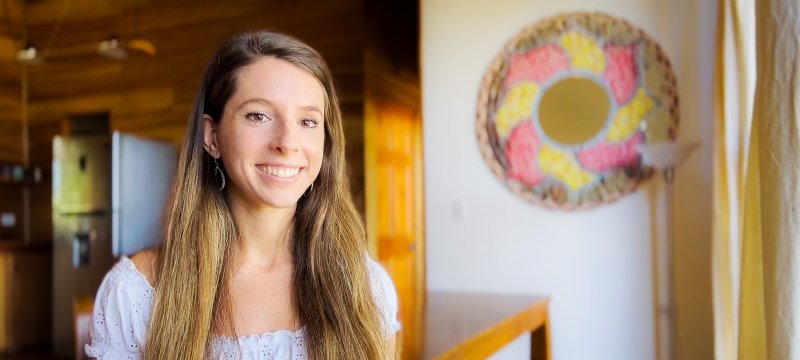



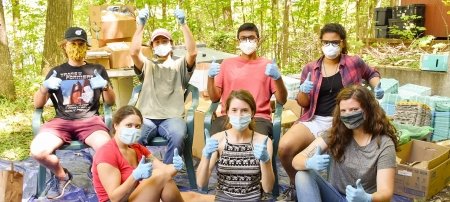
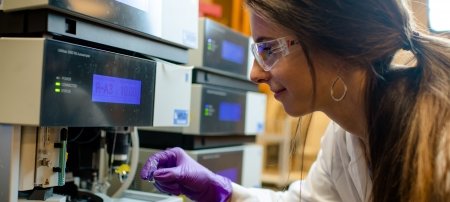
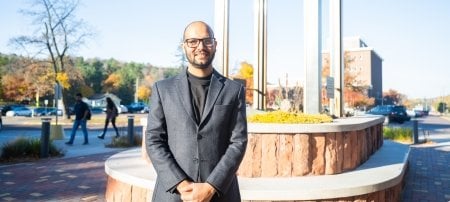
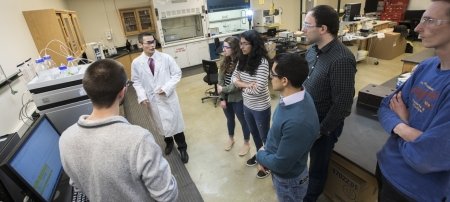
Comments